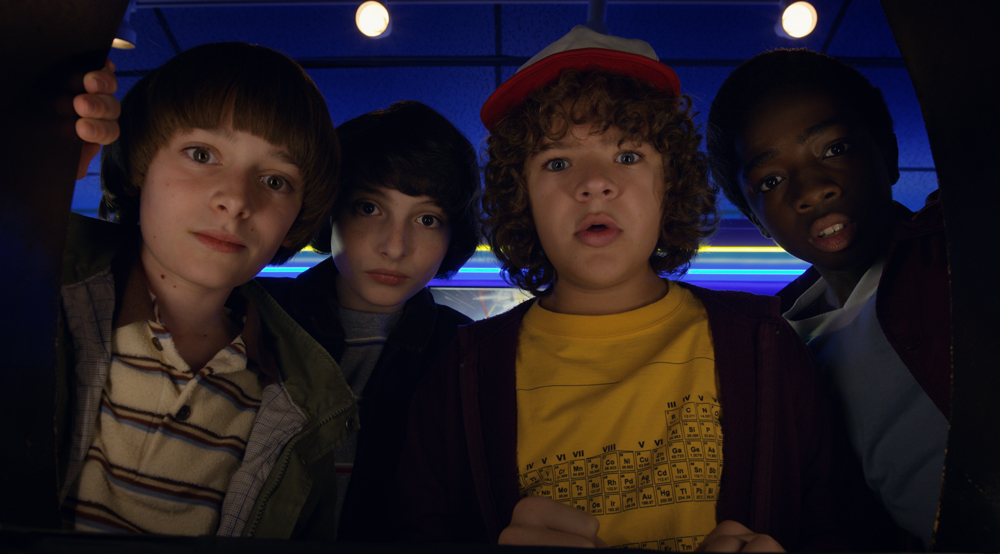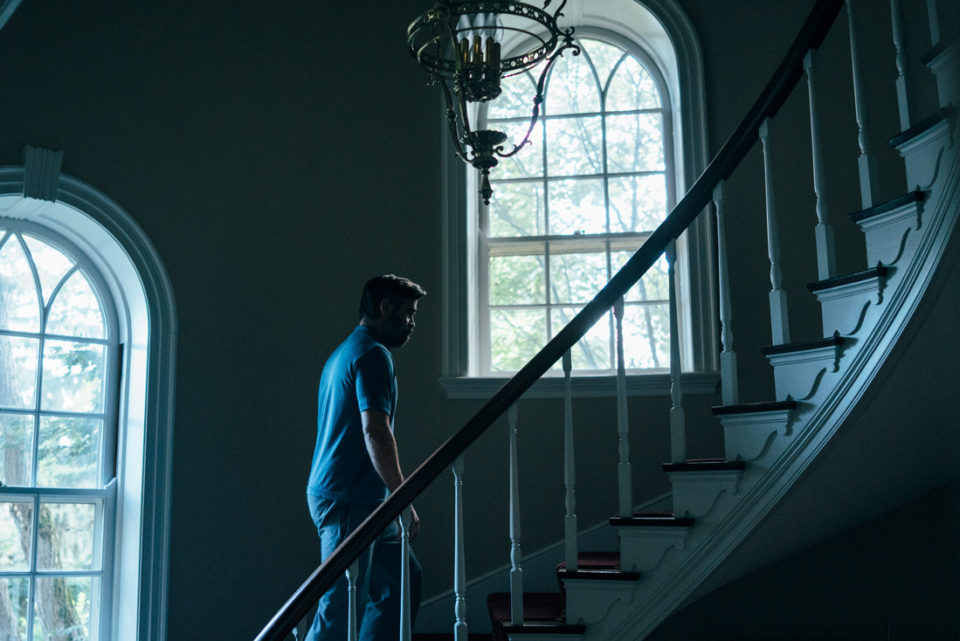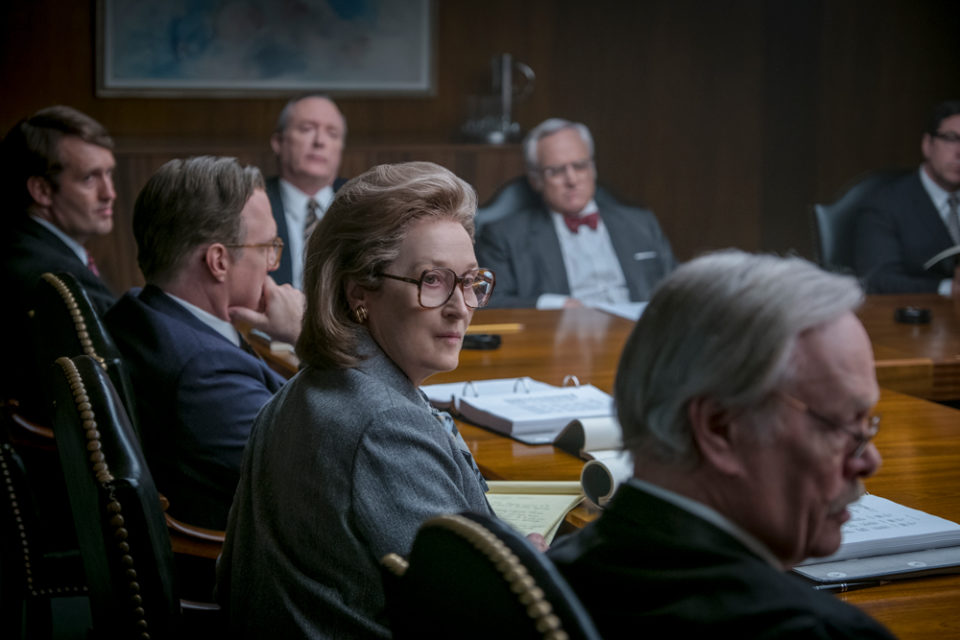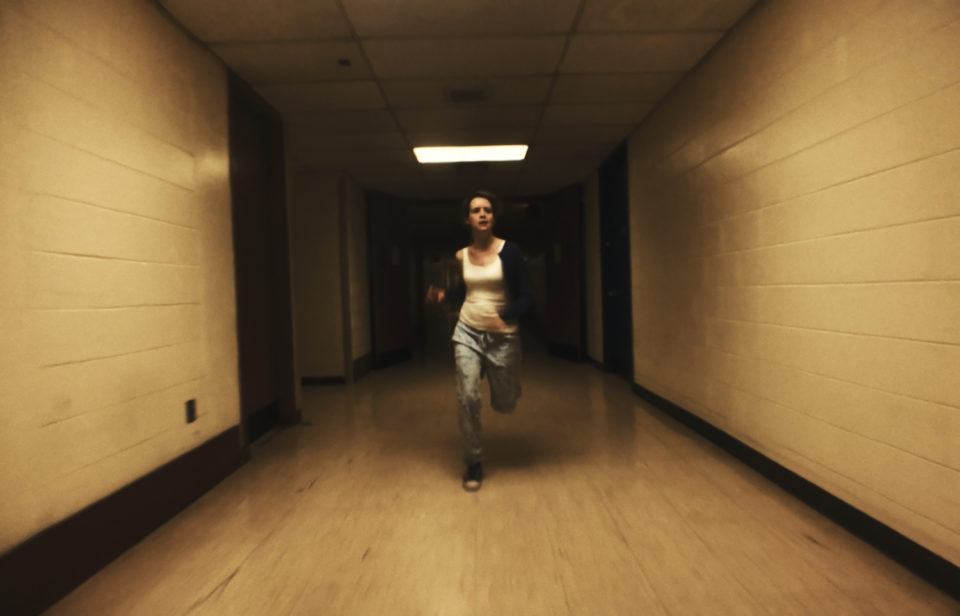It felt impossible, last year, to avoid the first season of Netflix’s Stranger Things. It began with a paranormal, missing child storyline: on the way home from a Dungeons and Dragons session with friends, a sensitive and intelligent twelve-year-old called Will vanishes into the reedy woods of Hawkins, Indiana, in the autumn of 1983. The wheel of a pushbike is left spinning; a headlamp glows.
Despite the increasingly grim evidence, even a body, Will’s harried mum, Joyce (Winona Ryder), senses that her son is alive. But she can’t convince law enforcement officer Jim Hopper – a man still haunted by the loss of his own daughter – to chase the leads. Hopper sees Joyce’s maternal instincts as a form of hysteria, though he’ll steadily tread his way into the darkness that has taken her son.
Will’s friends Mike, Dustin and Lucas, the show’s central heroes, pick up the trail early. It leads them toward a mysterious fenced-off centre called the United States Department of Energy – much like the CIA’s rumoured MKUltra mind-control program – and its runaway human test subject, a psychokinetic girl called Eleven.
We were left on a cliffhanger: Will was found, or more accurately freed – but he and his friends had uncovered a larger, more troubling place, the Upside Down, an alternate dimension inhabited by a monster so unspeakable it has left Will with something resembling Post-Traumatic Stress Disorder.
Audiences globally were instantly enamoured of Stranger Things’ neon typography, evocative of Stephen King book covers of the 80s, and the spot-the-clue hints to Sam Raimi and James Cameron movies. Beyond the specific references was a certain mood and approach to genre: the pulpy storytelling beats of John Carpenter and Steven Spielberg – the cliffhangers and moments of epiphany – that formed the series’s loving blueprint.
The new season begins on Halloween a year after the cliffhanger, and takes us through Will’s readjustment to everyday life, Eleven’s hermited reinsertion into the real world since her escape from the government, and a deeper investigation into the Upside Down and the conspiratorial lab on the edge of town. We flick through allusions to Mad Max (the title of the first episode), Terminator (playing at the local theatre), and countless others.
And we realise the new season has lost its centre of gravity: without the easy, central mystery of solving Will’s disappearance, we’re in murkier terrain, and it takes many episodes for Eleven and Will’s crew to reunite their posse and get back on track toward the nature of the Upside Down and the Hawkins National Laboratory.
But the emotional core remains: the idea that a bunch of misfits can stumble on a world of adult conspiracy, that young people have pockets of secrecy and the ability to experience horror. Will realises he’s not haunted by PTSD flashbacks, but real and present visions of the Upside Down, a universe that he describes tearfully to his mother Joyce as “almost just a feeling” – a place of pure fear, and a metaphor, perhaps, for coming out of childhood. Will’s fright on Halloween, captured on home video and witnessed in playback by Joyce, of a gruesome, giant spidery form arching over the sky, offers another moment in which evidence of the Upside Down leaks into the realm of the real.
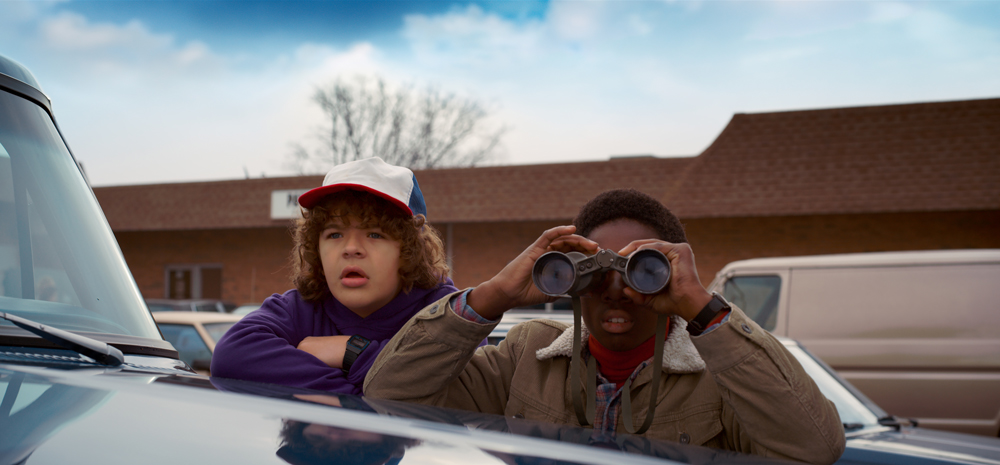
Gaten Matarazzo (Dustin) and Caleb McLaughlin (Lucas) on the lookout. Image courtesy Netflix.
Popular American cinema is full of spaces where children and teens have their own freedom and social lives beyond their parents’ oversight – lingering in lockered hallways, on school football fields, riding bikes through grim suburban streets, bus shelters, pastel postered bedrooms, Halloween itself – and Stranger Things recreates its own version of these spaces with devotion to both its cinematic precedents and the complexity of its pre-teen protagonists’ inner lives. These spaces render in exterior Mike, Dustin, Lucas, Will and Eleven’s young desires and their capacity for cognition and emotion on their own terms.
But there’s a part of the Stranger Things creation story that doesn’t fit the picture, yet makes the series’s onscreen universe much richer and odder. Self-mythologically branded in the credits as the Duffer Brothers, its creators, twins Matt and Ross Duffer were only born in February 1984, and the bulk of their recallable childhood, as well as their true coming-of-age, belongs to the 1990s.
Their vision of childhood in the 1980s is a romantic fantasy; through the era’s cultural detritus, they have sampled their childhood, or rather, an ideal of their childhood, and created a new kind of dreaming about their boyhood selves. Even the setting – Hawkins, Indiana – is imaginary, yet fleshed out with the kind of detail that saves it from being generic.
Stranger Things is a mythic pastiche of the most lasting pop culture impressions of the 1980s – an homage of homages, a zooming black hole of collaged parallel universes. It’s not the only program structured in this way. The New Yorker’s Troy Patterson says that Rick and Morty, the animated anti-comedy currently embroiled in fan-PR disaster, “supplies an artful answer to the question of what follows postmodernism: a decadent regurgitation of all its tropes, all at once, leavened by some humanistic wistfulness.” The difference in Stranger Things is that in Will and his friends, we sense cyphers for the Duffer Brothers themselves – the 1980s throwback is personal.
What’s so significant is that the pop culture references in Stranger Things are so faithfully resurrected that you don’t have to have experienced boyhood in the 1980s to connect to the story’s universe: they feel right, because they build toward a world that speaks to that tenuous space between childhood and adulthood. At its ebbs, Stranger Things feels bingeable and relaxing after a long dull day, and at its best, it feels like seeing one of your parents cry for the first time.
Strangest of all is that fact that if you look beyond the screen of Stranger Things, the 1980s wasn’t such a lovely era. The Duffer Brothers have carefully omitted a wealth of other cultural and political references from their wonderful, hermetic world: those belonging to the Cold War atmosphere, rank with nuclear fears and geopolitical rupture. Absent are the real horrors of the adult world, steeped in a brazenly conservative fog.
After all, 1984 was the year of Indian Prime Minister Indira Ghandi’s assassination, the year that the USSR boycotted the Los Angeles Olympic Games, that seventy US banks failed as the economy sunk into recession, that the contested superpower encountered its first ever bio-terrorism attack. So why do we look back on that time with such an affectionate form of nostalgia?
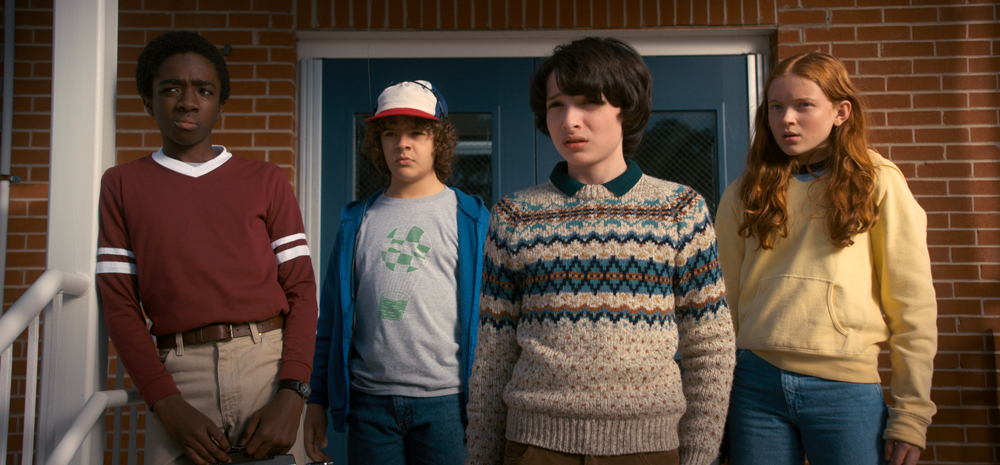
The emotional core remains. Image courtesy Netflix.
Will Eleven and Will and co encounter news of the Chernobyl catastrophe, the Space Shuttle Challenger disaster, the Ashland oil spill or the Unabomber as a new figure of domestic terrorism? Will they watch War Games, the 1983 sci-fi in which a teenaged video-gamer (Matthew Broderick) almost starts a nuclear war by hacking a military computer?
There is one recurring image in the first four episodes – a front yard election sign for ‘Bush/Reagan 1984’ – that gestures to the some of the era’s greater, realer monsters. Perhaps it’s a sign of unexplored things to come – that the It-like monsters of the nerdgang’s universe will be thrown into collision with more grownup realisations of the darker aspects of the 80s.
As phantasmal as the world of Hawkins, Indiana is, it’s a place we evidently prefer to the present. Stranger Things tells us that we can go home again – comfort in the monsters of childhood is the message of the moment. This is a time to think about the past, to return to some mythical place rosier than today, with romantic heroes whose adolescence is on the brink.
Stranger Things Season 2 is now streaming on Netflix.



